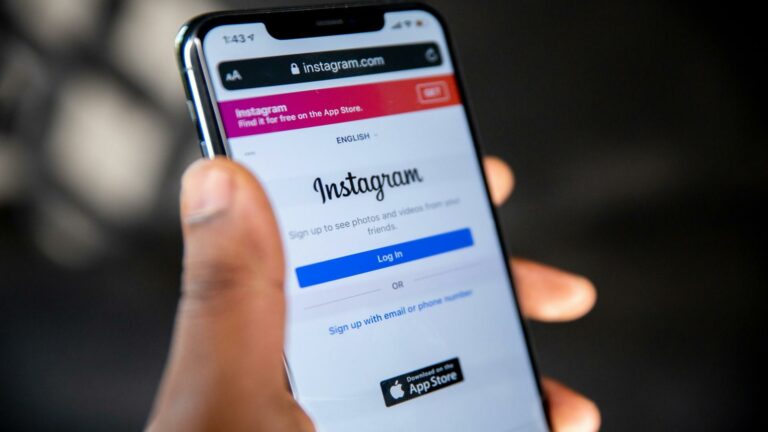Effective Website Typography Choices: Elevating Your Web Design
The Art and Science of Effective Website Typography Choices
In the digital age, where attention spans are shorter than ever, effective website typography choices play a crucial role in capturing and retaining your audience’s interest. At Web Design London, we understand the power of typography in creating visually appealing and user-friendly websites. In this comprehensive guide, we’ll explore the art and science of selecting the right typefaces, sizes, and layouts to enhance your web design and user experience.
Choosing the Right Typefaces
Selecting appropriate typefaces is fundamental to effective website typography. Consider these key factors:
- Readability: Opt for fonts that are easy to read across various devices and screen sizes. Sans-serif fonts like Helvetica or Arial are often preferred for body text due to their clarity on digital screens.
- Brand Consistency: Choose typefaces that align with your brand identity and convey the right mood to your audience.
- Versatility: Select font families with multiple weights and styles to create a cohesive hierarchy within your design.
Typography Hierarchy and Layout
Establishing a clear typography hierarchy helps guide users through your content:
- Use different font sizes, weights, and styles to distinguish between headings, subheadings, and body text.
- Maintain consistent spacing and alignment to create a visually pleasing layout.
- Limit the number of typefaces to two or three per website to maintain visual cohesion.
Optimizing for Readability and User Experience
Enhance the readability of your website content with these tips:
- Ensure adequate contrast between text and background colors.
- Use appropriate line spacing (leading) and letter spacing (tracking) to improve legibility.
- Consider using web-safe fonts to ensure consistent rendering across different devices and browsers.
By implementing these effective website typography choices, you can create a visually appealing and user-friendly website that engages your audience and reinforces your brand identity. Remember, typography is not just about aesthetics; it’s a powerful tool for communication and user experience enhancement.
The Importance of Typography in Web Design
The Impact of Effective Website Typography Choices
Typography is far more than just selecting a font; it’s a crucial element in web design that can make or break user experience. Effective website typography choices can significantly impact how visitors perceive and interact with your site. Here’s how thoughtful typography can elevate your web presence:
- Improved user experience and engagement: Well-chosen fonts and proper text formatting can guide users through your content seamlessly, encouraging longer site visits and deeper engagement.
- Enhanced brand recognition and consistency: Consistent typography across your website reinforces your brand identity, making it more memorable to visitors. Choosing typefaces that align with your brand’s personality is crucial for creating a cohesive visual identity.
- Increased readability and comprehension: Proper font selection, sizing, and spacing can significantly improve the readability of your content, ensuring that your message is easily understood by your audience.
- Effective content hierarchy: Typography helps create a clear visual hierarchy, guiding users through your content and highlighting key information. This is essential for directing attention to important elements on your web pages.
- Emotional resonance and tone-setting: Different typefaces evoke various emotions and set distinct tones. Choosing the right typography can help convey your brand’s personality and connect with your target audience on an emotional level.
At Web Design London, we understand the pivotal role of typography in creating impactful websites. We carefully consider factors such as font selection, pairing, and implementation to ensure that your website not only looks visually appealing but also communicates effectively with your target audience. By prioritizing typography as a fundamental element of our web design process, we create websites that not only capture attention but also deliver your message with clarity and style.
Key Principles for Effective Website Typography Choices
Effective Website Typography Choices
To create a visually appealing and user-friendly website, it’s crucial to make informed typography choices. Consider these essential principles to enhance your site’s readability and overall aesthetic:
- Choose readable fonts: Select typefaces that are easy to read on various devices and screen sizes. Sans-serif fonts are often preferred for body text due to their clarity on digital screens.
- Establish a clear hierarchy: Use different font sizes, weights, and styles to create a visual hierarchy that guides users through your content. This helps improve the structure and organization of your web pages.
- Maintain consistency: Use a limited number of fonts and stick to a consistent typographic style throughout your website. This creates a cohesive look and enhances brand recognition.
- Consider line length and spacing: Aim for 50-75 characters per line for optimal readability. Adjust line height (leading) and letter spacing (tracking) to improve legibility and visual appeal.
- Use contrast effectively: Ensure sufficient contrast between text and background colors to enhance readability, especially for users with visual impairments.
- Optimize for mobile: Test your typography choices on various devices to ensure they remain legible and visually appealing across different screen sizes.
By implementing these effective website typography choices, you’ll create a more engaging and user-friendly experience for your visitors, ultimately improving your site’s performance and search engine optimization.
Selecting the Right Typefaces for Your Website
Making Effective Website Typography Choices
Choosing the perfect typefaces for your website can be overwhelming, given the vast array of options available. However, making informed decisions about your website’s typography is crucial for creating a visually appealing and user-friendly design. Here are some tips to help you make effective website typography choices:
1. Limit Your Typeface Selection
To maintain visual cohesion throughout your content, it’s best to use no more than two different typefaces across your website. Many successful websites use just one typeface family, applying different weights and styles for various purposes like headings, body text, and buttons. If you opt for two typefaces, ensure they are visually compatible yet distinguishable from each other. Limiting your typeface selection helps create a consistent and professional look.
2. Prioritize Readability
When it comes to body text, sans-serif fonts are generally more readable in digital contexts. Popular choices include Helvetica, Arial, and Roboto. These fonts are designed to be easily legible on screens and work well for extended reading. For headings or decorative elements, you can consider using serif fonts to create contrast and draw attention.
3. Consider Web-Safe Fonts
Opting for web-safe fonts ensures that your text will render correctly across different browsers and devices. These fonts are widely supported and familiar to readers, which can enhance the overall user experience. Some popular web-safe fonts include Georgia, Tahoma, and Verdana. If you choose a non-standard typeface, be prepared to use fallback options in case it doesn’t display correctly on some systems.
4. Pay Attention to Hierarchy
Establish a clear typographic hierarchy to guide readers through your content. Use different font sizes, weights, and styles to distinguish between headings, subheadings, and body text. This helps users scan your pages more effectively and locate the information they need. Choosing typefaces with generous spacing can also improve legibility and readability.
5. Match Typography to Your Brand
Your website’s typography should align with your brand’s personality and message. Consider the mood and style you want to convey, whether it’s formal, casual, modern, or traditional. For example, a law firm might opt for a more conservative serif font, while a tech startup might choose a sleek sans-serif typeface.
By following these guidelines, you can make informed decisions about your website’s typography that will enhance both its aesthetics and functionality. Remember that effective typography choices contribute significantly to the overall user experience and can help reinforce your brand identity online.
Typography Best Practices for Web Design
Best Practices for Effective Website Typography Choices
To create a visually appealing and user-friendly website, implementing effective typography choices is crucial. Here are some best practices to enhance your website’s readability and overall design:
- Limit typefaces: Use no more than two different typefaces across your website to maintain visual consistency. Many websites do well with just one typeface, applying different weights and styles for various elements.
- Choose sans-serif for body text: Sans-serif fonts are generally more readable on digital screens. Reserve serif fonts for headings or decorative elements to create contrast.
- Stick to web-safe fonts: Opt for standard, web-safe fonts to ensure compatibility across different browsers and devices. This approach also helps readers quickly scan and absorb your content.
- Size appropriately: Set a minimum font size of 16px for body text to ensure readability. Vary sizes for headings and subheadings to establish a clear hierarchy.
- Use color carefully: Ensure sufficient contrast between text and background colors. The Web Content Accessibility Guidelines recommend a contrast ratio of at least 4.5:1 for most text.
- Mind the line length: Aim for 60-70 characters per line for optimal readability. This helps prevent eye strain and improves content comprehension.
- Provide adequate spacing: Use appropriate line height and paragraph spacing to enhance readability and create a clean, balanced design.
- Avoid all caps: Limit the use of all capital letters, as they can be harder to read and may come across as shouting. Instead, use bold or italic styles for emphasis.
By implementing these typography best practices, you can significantly improve your website’s user experience, readability, and overall visual appeal. Remember to test your typography choices across different devices and screen sizes to ensure consistency and accessibility for all users.
Advanced Typography Techniques for Web Design
Advanced Typography Techniques for Effective Website Design
Elevate your website’s visual appeal and readability with these advanced typography techniques:
- Hierarchy and Contrast: Establish a clear typographic hierarchy using size, weight, and color to guide users through your content. Create contrast between headings and body text to improve scannability.
- Responsive Typography: Implement fluid typography that adapts to different screen sizes, ensuring optimal readability across devices.
- Pairing Fonts: Combine complementary typefaces to create visual interest. Use a serif font for headings and a sans-serif for body text, or vice versa, to achieve a balanced look.
- Whitespace Utilization: Leverage whitespace effectively to improve readability and create a clean, modern aesthetic. Adjust line height and letter spacing for optimal legibility.
- Custom Web Fonts: Incorporate unique, brand-specific fonts using services like Google Fonts or Adobe Fonts to enhance your website’s personality and consistency with your brand identity.
- Micro-typography: Pay attention to details like kerning, ligatures, and proper punctuation marks to refine your typography and create a polished look.
By mastering these advanced typography techniques, you can significantly enhance your website’s visual appeal, readability, and overall user experience. Remember to always test your typography choices across different devices and browsers to ensure consistency and accessibility.
How Web Design London Can Help with Your Typography Needs
Mastering Effective Website Typography Choices
At Web Design London, we specialize in creating visually stunning and highly functional websites that leverage effective website typography choices. Our team of expert designers and developers understands the crucial role typography plays in user experience and brand perception. We can help you:
- Select the perfect typefaces to represent your brand identity and enhance readability
- Create a cohesive and harmonious typographic system that guides users through your content
- Implement responsive and accessible typography to ensure a seamless experience across devices
- Optimize your website’s performance without sacrificing design aesthetics
- Ensure consistency across all your digital platforms for a unified brand presence
When it comes to effective website typography, it’s essential to consider factors such as legibility, readability, and overall visual appeal. Our experts carefully analyze your brand’s personality and target audience to make informed decisions about font choices, sizes, and spacing.
We follow best practices in web typography, including:
- Limiting the number of typefaces to maintain visual cohesion
- Using sans-serif fonts for body text to improve readability on screens
- Implementing proper hierarchy with appropriate font sizes and weights
- Ensuring sufficient line spacing and character limits for optimal readability
Our team stays up-to-date with the latest trends and technologies in web typography, allowing us to create modern, engaging designs that stand out in the digital landscape.
We understand that every business is unique, and we tailor our typography solutions to meet your specific needs and goals. Whether you’re looking for a complete website redesign or want to refine your existing typography, our team is here to help you make effective website typography choices that elevate your online presence and engage your audience.
Conclusion: The Power of Effective Website Typography Choices
The Power of Effective Website Typography Choices
Typography is a fundamental element of web design that can make or break your website’s success. By making effective website typography choices, you can create a visually appealing, readable, and engaging online presence that resonates with your audience and supports your business goals.
When selecting typography for your website, consider the following factors:
- Readability: Choose fonts that are easy to read across different devices and screen sizes.
- Brand consistency: Select typefaces that align with your brand identity and values.
- Hierarchy: Use different font sizes and weights to establish a clear content hierarchy.
- Contrast: Ensure sufficient contrast between text and background colors for improved accessibility.
- Responsive design: Implement typography that adapts seamlessly to various screen sizes and resolutions.
Effective typography goes beyond aesthetics; it can significantly impact your website’s search engine optimization (SEO) performance. Well-structured headings, appropriate font sizes, and proper use of white space can improve user experience and engagement, leading to better search rankings.
At Web Design London, we’re passionate about helping businesses leverage the power of typography to create impactful and successful websites. Our expertise in web design, SEO, and digital marketing ensures that your typography not only looks great but also contributes to your overall online performance.
Ready to elevate your website’s typography and take your online presence to the next level? Contact Web Design London today for a consultation, and let’s create a typographic masterpiece that sets your business apart in the digital landscape.













